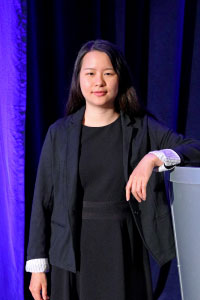Large-Scale Analysis of Electronic Effects in Protein Structure

Protein crystal structures provide a valuable source of information on the internal interactions of a protein and provide a starting point for simulations. We examine how large-scale analysis of protein structures can explain unexpected geometries and interactions and provide a starting point for further modeling. The large-scale analysis takes two forms: large data sets and large calculations. We first investigate unexpectedly short non-covalent distances in published protein crystal structures. We observe more than 75,000 close contacts in a curated data set of high-quality protein structures and examine the trends in which residues and atoms are involved in these close contacts. We characterize a subset of more than 5,000 close contacts with quantum mechanical and molecular mechanical methods to understand their stability.
